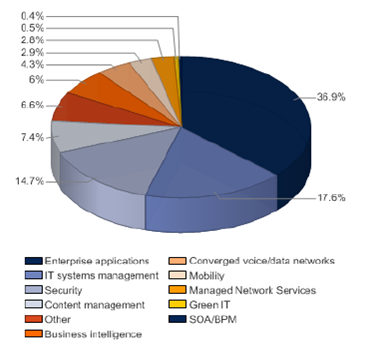2011 Trends to Watch: Data Center Technologies
03 Dec 2010 • by Natalie Aster

London – Virtualization is considered the technology to deliver the improved environmental credentials organizations are seeking, but one of the major benefits associated with virtualization is its ability to accommodate a flexible approach to workload management and service availability. However, this flexibility comes at a price because virtualization adds a layer of indirection that increases the complexity of dynamically managing the delivery of these services.
The market is still evolving, and is characterized by proprietary technologies that have only a rudimentary ability to support cross-platform interoperability. Therefore, an often-overlooked aspect of managing virtual environments is the need for any management tool to operate at a more granular level than that required for physical environments. This approach is further complicated by the need to holistically manage both the server, network, and storage elements, which is particularly important when providing solutions that enable increased service availability.
In 2011 virtualization will not only be selected for consolidation and simplification reasons, but its value proposition will expand to include addressing an organization's environment challenges, providing a flexible resource that can change how IT is consumed, and delivering the platform to greater use of cloud services.
Report Details:
2011 Trends to Watch: Data Center Technologies
Published: October 2010
Pages: 26
Price: US$ 1,895.00
Report Sample Abstract:
Cost remains a significant influence on selecting any new technology to deploy, and as the cost to serve increases, many organizations will focus on technologies such as automation to address these concerns. However, increased adoption of automation technologies will require an organization to review its approach to trust. It may in fact be the aspect of organizational culture that either has to change, or will hold back the scope of its use while the organization adapts to these new demands at a pace it is comfortable with.
While automation remains a cultural issue for organizations rather than a technological one, technologies such as cloud computing need new approaches to management, and in particular how IT is accounted for and funded. The promise of cloud computing is that IT horsepower becomes an ephemeral concept, and is available as and when needed to meet demand. The current-day reality is somewhat different, in that the market is characterized by a lack of interoperability and an equal lack of coherent management tools that can be used to orchestrate supply and demand across this fragmented technology.
Ovum's global IT spending review

More and more technologies have been developed and deployed, each with its management capability, and these products are often add-ons to an existing complex data center management picture. Consider clustering technologies: each vendor has its own set of instructions and interfaces with which administrators control and manage the operation. Ovum believes that the time has come to think strategically about systems management, and how it can be used in a coordinated and effective manner to deliver real business benefit.
More information can be found in the report “2011 Trends to Watch: Data Center Technologies” by Ovum.
To order the report or ask for sample pages contact [email protected]
Contacts
MarketPublishers, Ltd.
Mrs. Alla Martin
Tel: +357 96 030922
Fax: +44 207 900 3970
[email protected]
www.marketpublishers.com
Analytics & News
